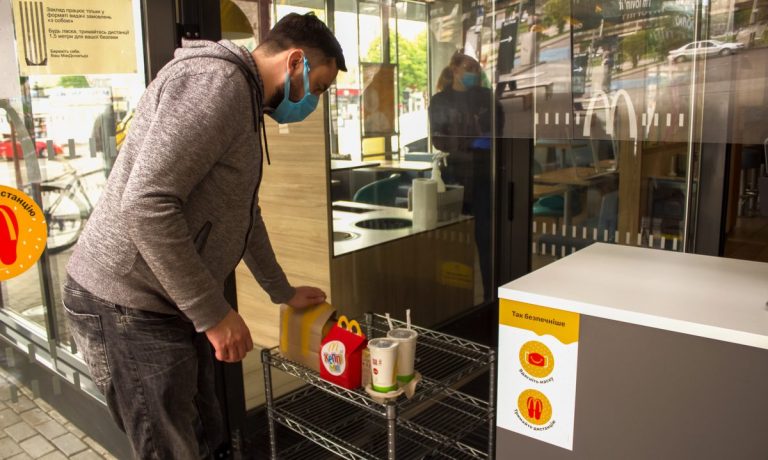DoorDash Reportedly Puts Pressure on McDonald’s With Slowness Fee

In the ongoing power struggle between restaurant aggregators and the merchants on their platforms, DoorDash has found a new way to get the results it wants out of its restaurants. The aggregator will begin to impose higher fees on McDonald’s restaurants that prepare orders more slowly, The Wall Street Journal (WSJ) reported Monday (Feb. 14).
The food delivery giant is lowering its starting rate for the quick-service restaurant (QSR) brand to 11.6% (or 14.1% for DashPass members) from 15.5%, the report stated. If a location keeps drivers waiting, however, the rate could go as high as 17.6% (or 20.1% for DashPass subscribers). Additionally, the QSR’s locations will now have to cover refunds related to errors made by the store after a set number of complaints.
“DoorDash does not comment on confidential client contract terms,” a DoorDash spokesperson said in an email to PYMNTS. “The fee structures for our merchant partnerships can vary by store or franchisee location and, in practice, can be determined by a variety of factors, including volume, average delivery distance, and value-added services, as well as operational performance and quality. Any summary figure is highly misleading.”
A move to raise commissions on slow orders could help the delivery service make up for the cost of having an on-the-clock driver wait around to collect the consumer’s order. For restaurants, however, challenges completing orders on time are to be expected, given the ongoing labor shortages facing the industry, leaving many locations not only short-staffed but also often staffed with employees with less experience.
While many of restaurants’ labor challenges are out of their control, there are digital tools that can help keep operations running as smoothly and efficiently as possible.
“[Customer experience management] data tools can help restaurants understand trends and make decisions based on what menu items are in stock and available,” Paytronix Chief Revenue Officer Charles Gray said in a Q&A featured in the most recent edition of PYMNTS and Paytronix’s Order To Eat Tracker. “These tools can also help the operators determine what items should be removed from the menu.”
Read more: QSRs Use Order Throttling, Automation to Help Staff Balance Dine-in, Digital Orders
Many restaurants are seeking solutions such as these that can help them operate more efficiently, according to data from the January issue of The Main Street Merchant Index™ (MSI), “Main Street Index: Optimism Amid Inflation Edition,” a PYMNTS and Melio collaboration, which drew from a survey of 765 business owners on Main Street U.S.A.
The study found that 29% of food, entertainment and accommodation businesses reported planning to invest in automatization/robotization of their current manual tasks within the next six months and that 34% planned to increase the number of employees, while 55% planned to buy or upgrade equipment.
See more: Despite Economic Challenges, Main Street Restaurants Invest in Innovation in 2022
When restaurants do not take these kinds of much-needed measures, they risk losing their customers.
“Restaurants must offer a seamless delivery experience from the moment the order is placed to when it arrives at a customer’s doorstep,” John Haggai, president and chief operating officer of Burton’s Grill & Bar and Red Heat Tavern, said in an interview published in the Order To Eat Tracker. “And the more you can control, the better, because you have to get a lot of things right every time in an environment that is not always predictable.”